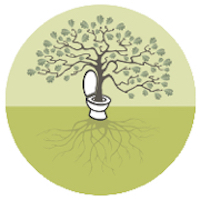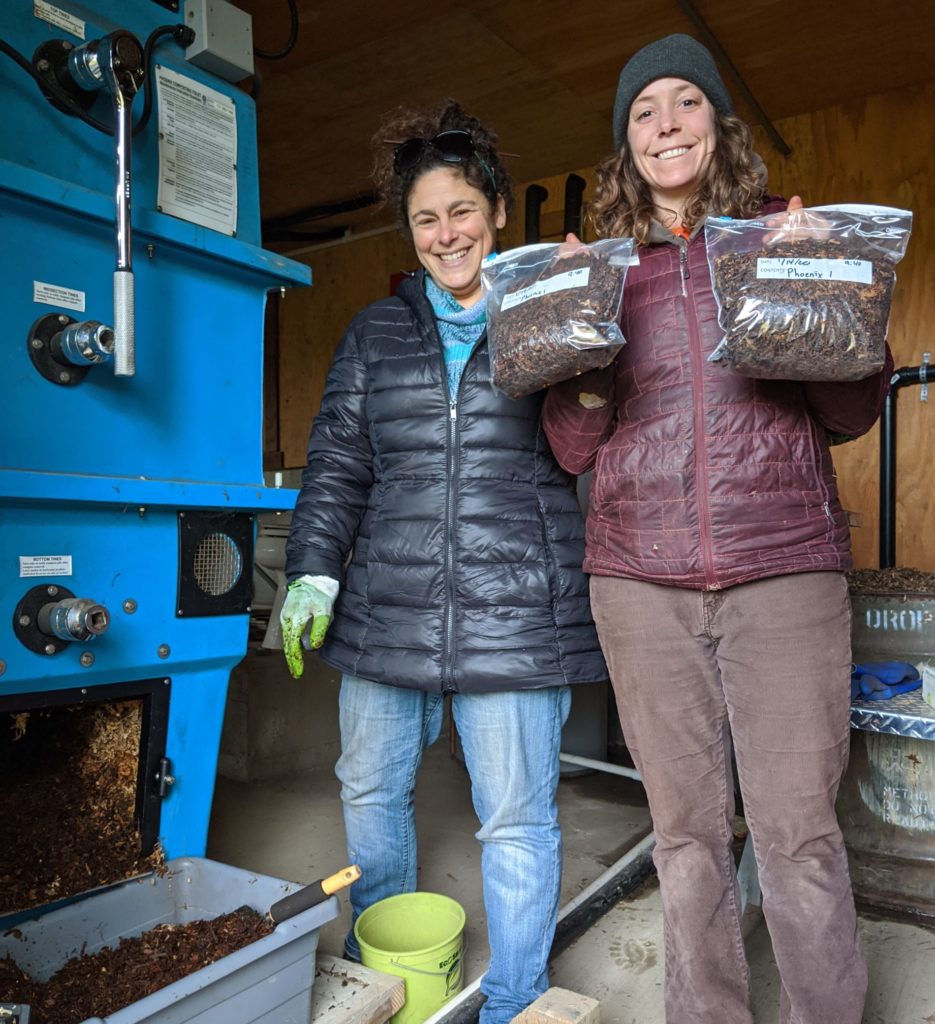
January 14, 2020 This week we celebrated a huge milestone in the progression of OAEC’s Compost Toilet Research Project. It has been three and a half years since we installed the first of three trial commercial-grade composting systems, and on Tuesday, we took our first compost test samples to the lab!
The tests – biology and chemistry.
The purpose of testing in our research* is two-fold. First and foremost, from a public health perspective, we need to prove that composting is an effective way to eliminate pathogens and prevent groundwater contamination. The biological tests of the samples will determine levels of fecal coliform and parasites.
Secondly, we hope to show the value of ‘humanure’ compost as a nutrient-rich fertilizer, used for millennia as a soil-building, carbon-sequestering resource. The chemical make up of the samples will be evaluated in terms of N-P-K content (nitrogen-potassium-phosphorus – the standard ratio measurement for commercial fertilizers) as well as total carbon. Check this primer on how compost toilets work to break down pathogens and build soil.
*All three of these systems with their respective manufacturer recommended protocols have already been approved in other states and countries. We are hopeful that our research confirms their efficacy, and yet, we are committed to conducting unbiased, scientific research. We will go back to the drawing board if one or more of the systems fail and will note these findings in our final recommendations to the county.
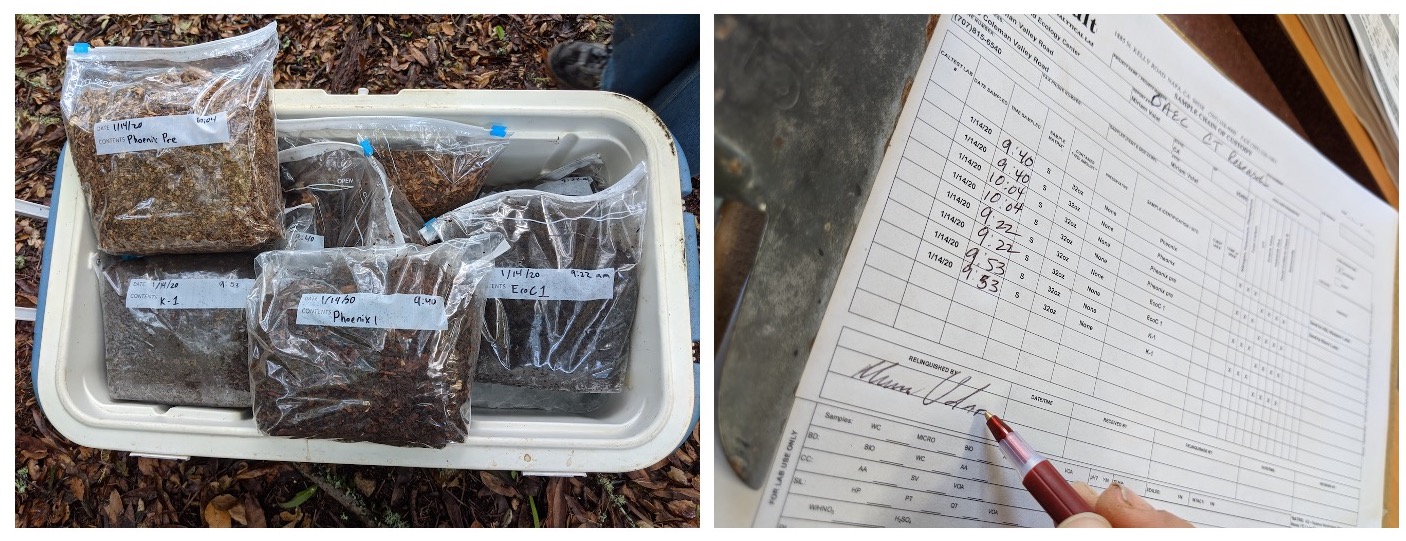 To preserve the active biology, samples were put on ice and transported to the lab within 6 hours of removal from the chamber.
To preserve the active biology, samples were put on ice and transported to the lab within 6 hours of removal from the chamber.
Mycelium! Worms! Hooray!
When the Carousel system was first installed and material began to be deposited in the chamber, a drainage problem with the vacuum pump emerged, and so, there was some concern that this first batch of compost might be too wet. We were relieved to find mycelium present and the compost smelling like good, earthy soil – both indicators, that although slightly moist, it had not gone anaerobic. In the Phoenix system, we had inoculated the initial chamber with red wiggler worms according to manufacturer recommendations and were thrilled to find an abundant, thriving worm colony hard at work breaking down the material.
For the real eco-sanitation geeks, you may be interested to know that these first samples were taken from what could be called the “starter” or “pre” batch – the chambers were initially filled with wood chips and shavings to provide a base of carbon material upon which to build the compost. This is to say that the test results for this first round may not be representative of what future batches will look like because these will likely contain a much higher ratio of total carbon.
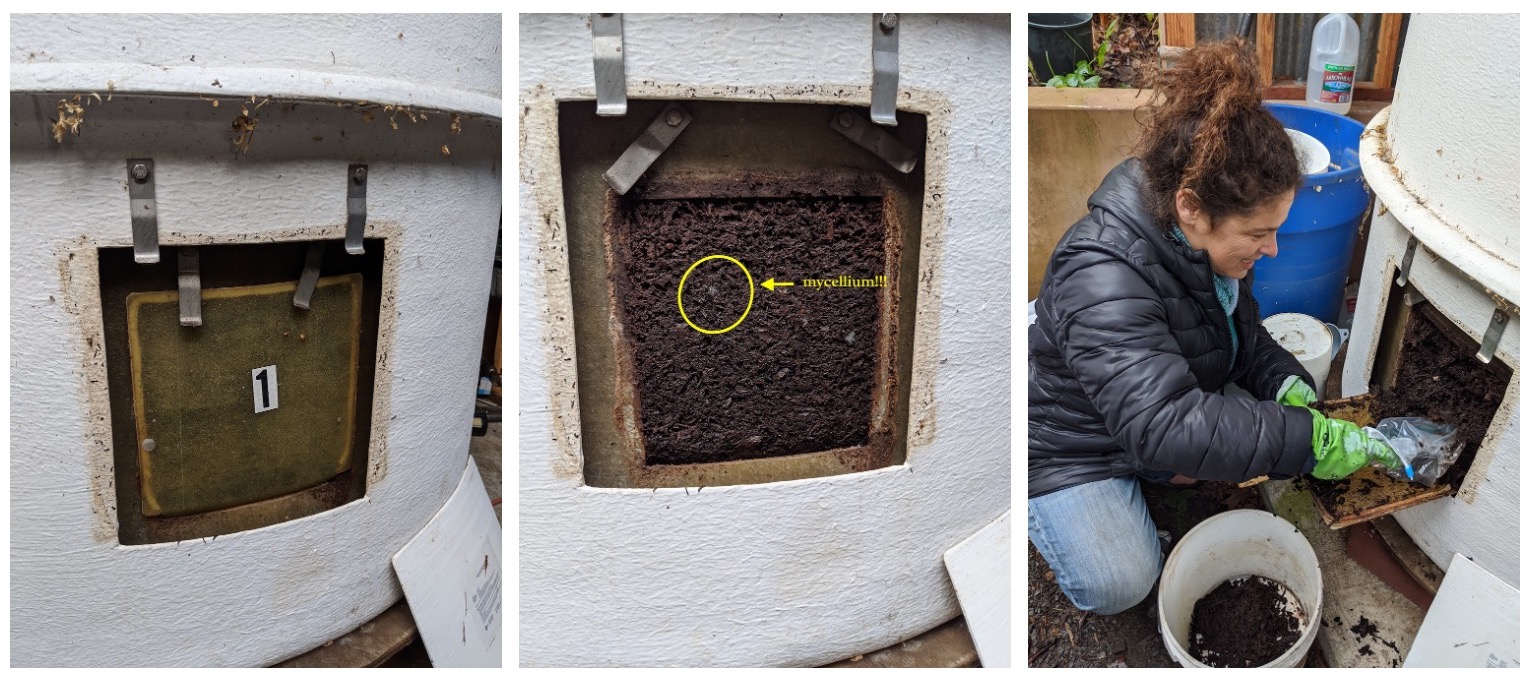
Behind door number 1, Soil Scientist Miriam Volat takes a test sample from the ‘Carousel’ compost toilet system and is delighted by the presence of mycelium!
2016-2019 Over the past 3 years getting these systems up and running, we’ve had to troubleshoot a number of gnarly drainage and ventilation problems and jump through bureaucratic hoops to adjust our permit accordingly with the county. We will spare the gory details in this brief update, but suffice it to say that through this process we’ve learned A LOT working with the county and the manufacturers. Our maintenance and housekeeping teams are fine tuning their protocols and taking copious notes so that others can learn from our challenges. A thousand thank yous to James, Stacy and their teams! We are keenly aware that these systems must provide a pleasant user experience for wide-scale mainstream adoption (we aim to satisfy both government and grandma!) so we are also developing best practices for social acceptance by our visitors and maintenance staff alike.
What’s next?
With every flush, we collect more “research material” from participants of OAEC courses and group retreats, yet we can only move as fast as the composters do their job, so we think we are still a year or two away from having publishable research data on the efficacy of the systems. In the meantime, we are working to complete model ordinance and regulatory language to pair with our research findings to present to other jurisdictions in California for adoption, ideally to avoid more lengthy and expensive pilot research. We are also working with emerging compost toilet pilot projects at the Pogonip Homeless Garden Project in Santa Cruz and at Urban Tilth in Richmond.
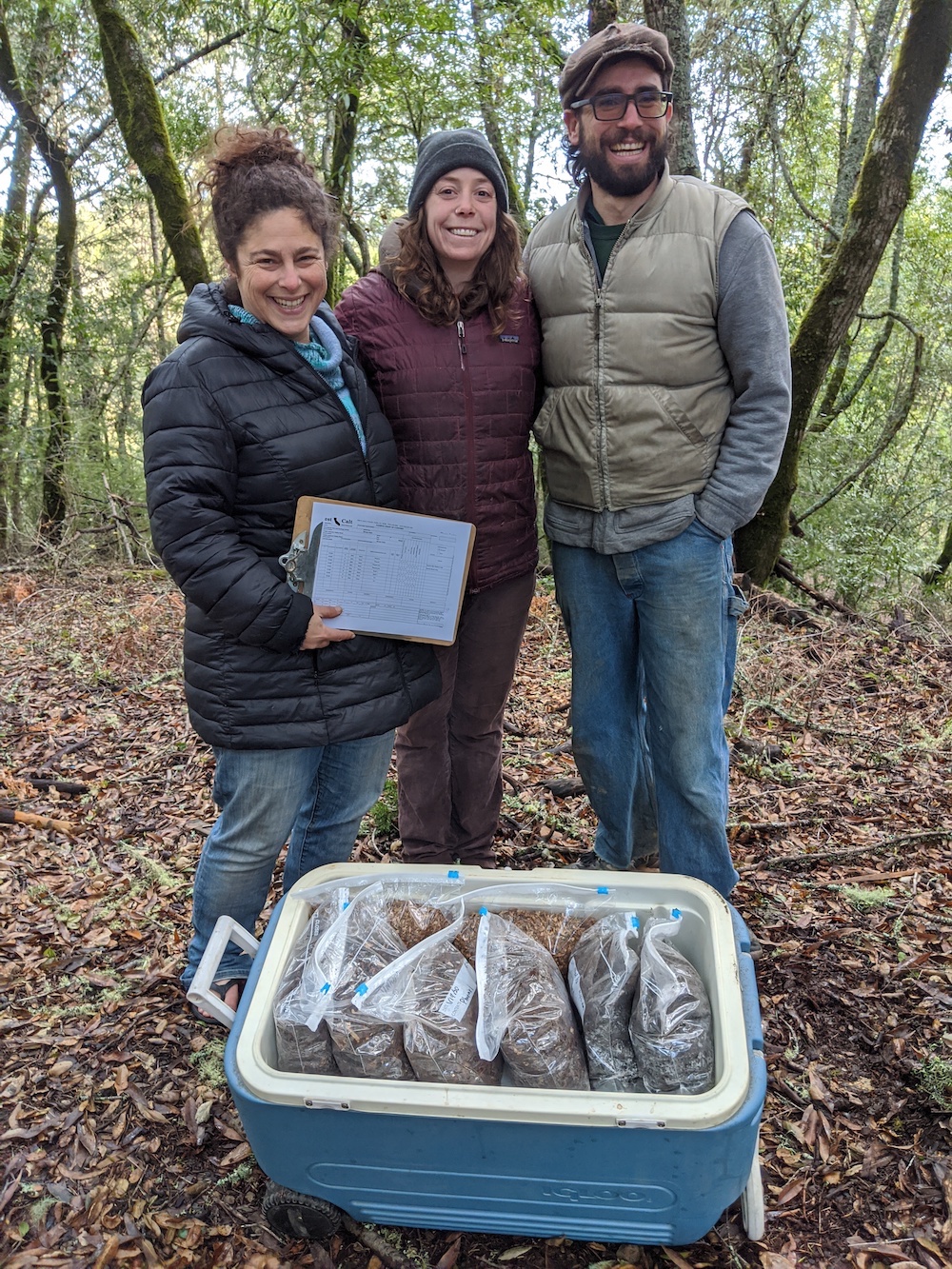
Compost Toilet Project Manager Miriam Volat and Facilities Maintenance Staff Bianca Pisano and Chris Santana proudly posing with their hard-earned compost samples. Congratulations Eco-Sanitation Team!
